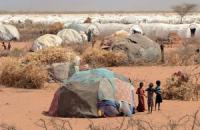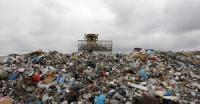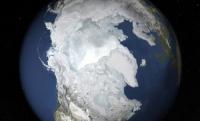-
Rising flood insurance costs a growing burden to communities, NYC homeowners
Flood insurance is already difficult to afford for many homeowners in New York City, and the situation will only worsen as flood maps are revised to reflect current risk and if the federal government continues to move toward risk-based rates, according to a new study.of-its-kind study by the RAND Corporation.
-
-
Seismic monitoring network helps locate, determine origins of earthquakes in Texas
Almost a decade ago, the ground around the densely populated Dallas-Fort Worth Metroplex started shaking. As the frequency and intensity of earthquakes increased in a region poorly prepared for the seismic activity, the risk became a priority for the state. Residents, politicians, and oil-gas industry leaders reached out to the Bureau of Economic Geology. The bureau is the oldest and second largest research unit at the university, made up of more than 250 scientists, engineers, and economists. The organization also functions as the State Geological Survey of Texas — a broker of information among industry, academia and government agencies.
-
-
Israelis, Palestinians, Jordanians jointly train to provide emergency aid during earthquakes
Working together is the name of the game in a project now underway in Israeli, Palestinian Authority and Jordanian communities. The joint project, Community Emergency Response Teams (CERT), aims to train local residents as first responders in case of an earthquake.
-
-
S&T and New Orleans conduct flood-relief planning exercise
Flood-related disasters present significant risks to life and property across our nation. During 8-14 August 2016, 6.9 trillion gallons of rain water flooded Baton Rouge, Louisiana. In cases like the 2016 Baton Rouge flood, response agencies need assistance from surrounding communities and citizens—whether it is manpower, technology, status reports, or basic relief supplies. However, jurisdictions often have different communications systems, which can make it difficult to request help. This means that when a city is paralyzed by water, emergency responders have a difficult time maintaining situational awareness and gathering necessary resources.
-
-
Bringing values, not just facts, to climate fight
The facts, unfortunately, don’t speak for themselves. That’s why scientists have to speak out, according to Naomi Oreskes, a Harvard history of science professor who has taken a close look at the causes and effects of climate change denial. Denial, she said, isn’t about science but about individualism, skepticism of government power, the self-interest of those in affected industries, and conceptions of freedom. For those moved by those concerns, climate change is just the latest in a series of scientific problems leading to greater government intrusion. Disputing climate facts has roots in fear, Oreskes said — not of climate, but of higher taxes, bigger government, and lost freedoms.
-
-
Managed retreat: Relocating communities to get them out of harm’s way
More frequent extreme weather events put certain regions in the cross hairs of risks such as coastal flooding, heavy rain, and erosion. There is an obvious, but controversial, solution: relocating communities from vulnerable to safer areas. Based on examples from around the world, researchers chart the landscape for whether and how to implement the strategy of managed retreat – and how, with the minimum disruption possible, relocate or abandon development in the face of extreme weather risks.
-
-
Sea level rise makes much of Honolulu and Waikiki groundwater vulnerable to inundation
Researchers found that a large part of the heavily urbanized area of Honolulu and Waikīkī is at risk of groundwater inundation — flooding that occurs as groundwater is lifted above the ground surface due to sea level rise. “Our findings suggest that coastal communities in Hawai’i and globally are exposed to complex groundwater flooding hazards associated with sea level rise in addition to the typical concerns of coastal erosion and wave overtopping,” said one researchers. “Groundwater inundation will require entirely unique adaptation methods if we are to continue to live in and develop the coastal zone. Coastal planners and community stakeholders will need to work with architects, engineers, geologists, ecologists, economists, hydrologists and other innovative thinkers in order to manage these problems.”
-
-
Famine: Nearly 1.4 million children at risk of death in Nigeria, Somalia, South Sudan, and Yemen

Famine is looming in north-east Nigeria, Somalia, South Sudan, Yemen, and beyond, as nearly 1.4 million children are at imminent risk of death from severe acute malnutrition this year. Some 22 million children are hungry, sick, displaced, and out of school due to war, conflict and drought. They now face the risk of death from starvation, but also from preventable diseases like cholera and measles, which cause severe diarrhea and dehydration. This crisis is largely human-made. Scorched earth tactics by conflicting parties are destroying crops and critical infrastructure like health facilities. Heavy fighting is forcing farmers to abandon their fields, while blocking humanitarian access to people in desperate need of food aid and clean water.
-
-
Under climate change, farming is becoming riskier
Climate change will have an impact on agriculture, but a new study puts these changes in terms which are directly applicable to farmers. For Illinois, for example, the corn planting window will be split in two to avoid wet conditions in April and May. Each planting window carries increased risk – the early planting window could be thwarted by frost or heavy precipitation, and the late window cut short by intense late-summer drought. Farmers and crop insurers must evaluate risk to avoid losing profits.
-
-
Carbon Law, modeled after Moore’s Law, a pathway to halve emissions every decade

Moore’s Law states that computer processors double in power about every two years. While it is neither a natural nor legal law, this simple rule of thumb or heuristic has been described as a golden rule which has held for fifty years and still drives disruptive innovation. Research say that a carbon roadmap, driven by a simple rule of thumb, or Carbon Law, of halving emissions every decade, could catalyze disruptive innovation. Following a Carbon Law, which is based on published energy scenarios, would give the world a 75 percent chance of keeping Earth below 2°C above pre-industrial temperatures, the target agreed by nations in Paris in 2015.
-
-
Have humans transformed geological processes to create a new epoch -- the Anthropocene?

The Anthropocene — the concept that humans have so transformed geological processes at the Earth’s surface that we are living in a new epoch — was formulated by Nobel Laureate Paul Crutzen in 2000. It has since spread around not just the world of science, but also across the humanities and through the media into public consciousness. An international group of scientists – the Anthropocene Working Group – is now analyzing the Anthropocene as a potential new addition to the Geological Time Scale, which would be a major step in its global scientific recognition. These scientists argue that “irreversible” changes to the Earth provide striking evidence of new epoch.
-
-
Climate breaks multiple records in 2016, with global impacts

The year 2016 made history, with a record global temperature, exceptionally low sea ice, and unabated sea level rise, and ocean heat, according to the World Meteorological Organization (WMO). Extreme weather and climate conditions have continued into 2017. WMO Secretary-General Petteri Taalas said that the increased power of computing tools and the availability of long term climate data have made it possible today, through attribution studies, to demonstrate clearly the existence of links between man-made climate change and many cases of high impact extreme events in particular heatwaves.
-
-
Past quakes at Calif. fault portend abrupt sinking of Seal Beach wetlands
A new study shows evidence of abrupt sinking of the wetlands near Seal Beach caused by ancient earthquakes that shook the area at least three times in the past 2,000 years — and it could happen again, the researchers say. The paleoseismology study reveals that the wetlands at the National Wildlife Refuge Seal Beach, a nearly 500-acre area located within the Naval Weapons Station Seal Beach and next to the communities of Seal Beach and Huntington Harbor, are susceptible to rapid lowering in elevation during large — over 7.0 magnitude earthquakes.
-
-
Emergency retweets can help in times of disaster
Twitter and other social media tools are commonly used around the world. Now, many government and not-for-profit organizations have a presence on at least one of these systems and use them in various ways to share information about their activities and engage with people. For organizations that work in disaster zones and emergency situations, these tools can also be used to coordinate activities, help raise funds and disseminate timely news that can help in relief efforts.
-
-
As the world ends, people remain calm and prosocial: Video-game study

As the world ends, will you lock arms and sing “Kumbayah” or embark on a path of law-breaking, anti-social behavior? A new study, based upon the virtual actions of more than 80,000 players of the role-playing video game ArcheAge, suggests you will be singing. “We realize that, because this is a video game, the true consequences of the world ending are purely virtual. That being said, our dataset represents about as close as we can get to an actual end-of-the-world scenario,” says one researcher.
-
More headlines
The long view
The Surprising Reasons Floods and Other Disasters Are Deadlier at Night
It’s not just that it’s dark and people are asleep. Urban sprawl, confirmation bias, and other factors can play a role.
Why Flash Flood Warnings Will Continue to Go Unheeded
Experts say local education and community support are key to conveying risk.
